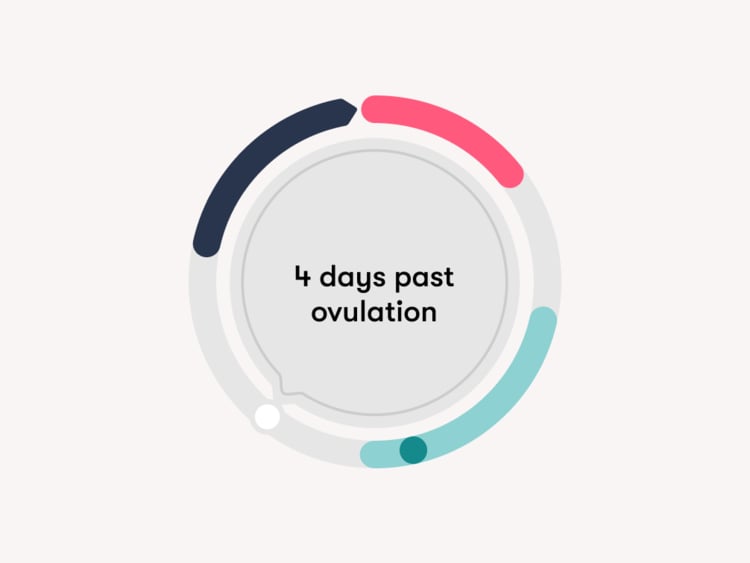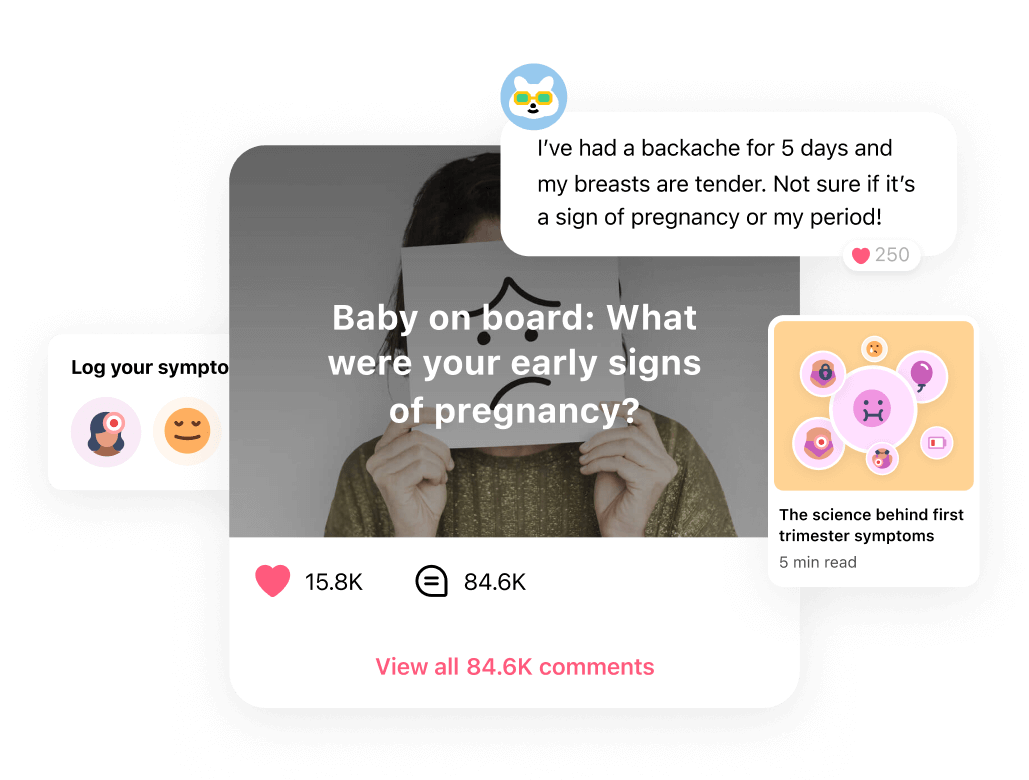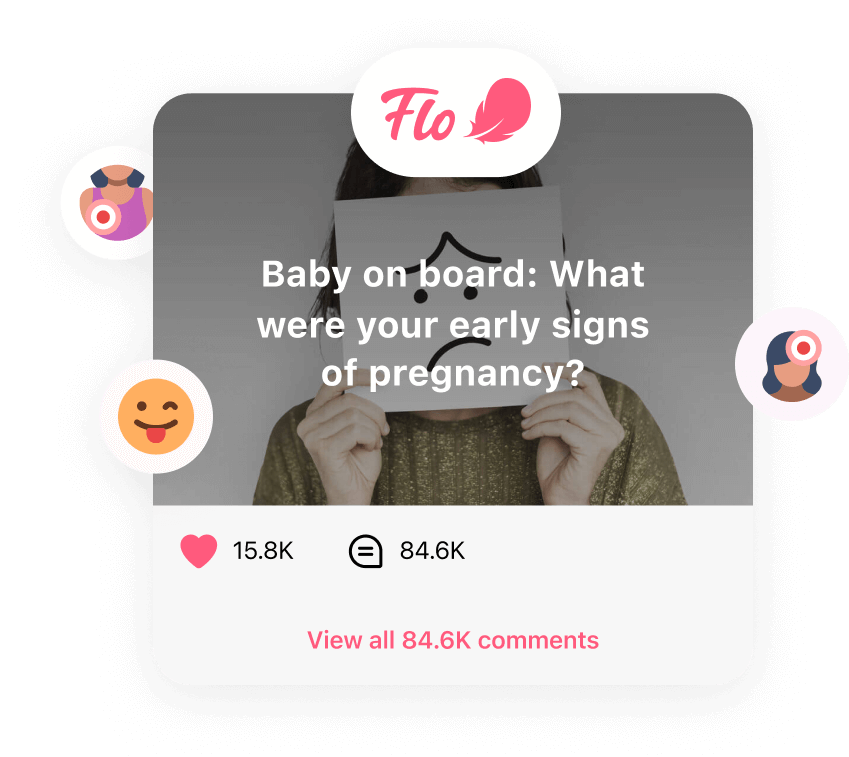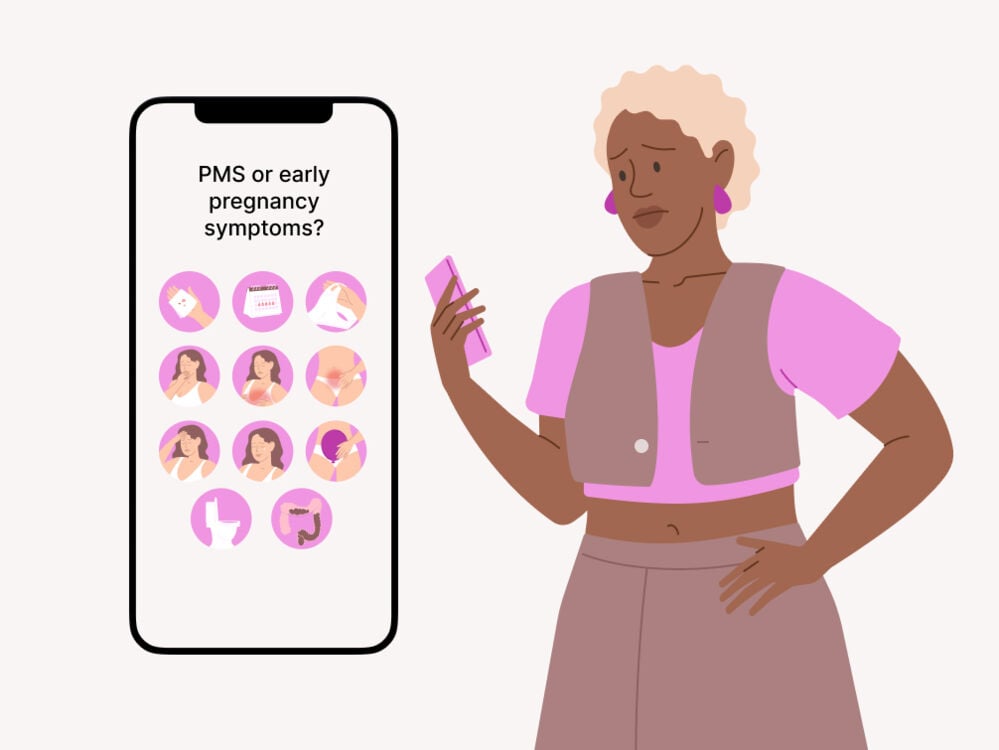Are you wondering when you can take a pregnancy test? Here’s the lowdown on 4 DPO.
-
Tracking cycle
-
Getting pregnant
-
Pregnancy
-
Help Center
-
Flo for Partners
-
Anonymous Mode
-
Flo app reviews
-
Flo Premium New
-
Secret Chats New
-
Symptom Checker New
-
Your cycle
-
Health 360°
-
Getting pregnant
-
Pregnancy
-
Being a mom
-
LGBTQ+
-
Quizzes
-
Ovulation calculator
-
hCG calculator
-
Pregnancy test calculator
-
Menstrual cycle calculator
-
Period calculator
-
Implantation calculator
-
Pregnancy weeks to months calculator
-
Pregnancy due date calculator
-
IVF and FET due date calculator
-
Due date calculator by ultrasound
-
Medical Affairs
-
Science & Research
-
Pass It On Project New
-
Privacy Portal
-
Press Center
-
Flo Accuracy
-
Careers
-
Contact Us
4 DPO: Are there any pregnancy symptoms at 4 days past ovulation?


Every piece of content at Flo Health adheres to the highest editorial standards for language, style, and medical accuracy. To learn what we do to deliver the best health and lifestyle insights to you, check out our content review principles.
From a missed period to sore breasts, the signs of early pregnancy look different for everyone. But when you’re trying to conceive, it’s understandable to be on high alert for any new feelings, especially as the wait to actually find out if you’re pregnant can feel like an eternity. So it’s no wonder lots of us are wondering if it’s possible to experience pregnancy symptoms as early as 4 days past ovulation (DPO).
The short answer is 4 DPO is too early to tell if you are pregnant because technically you aren’t — yet. Here’s the thing: If a sperm fertilizes your egg during your fertile window, then you’ve conceived. But you’re not officially pregnant until implantation happens (the embryo attaching to your uterine lining), typically around six to 10 days after conception. Want to know more? Let’s look at 4 DPO in more detail.
Key takeaways
- 4 DPO is generally too early for pregnancy symptoms to be detected because implantation hasn’t happened yet. This doesn’t necessarily mean you won’t get pregnant though.
- Early pregnancy and your monthly menstrual cycle can share pretty similar symptoms, so it can be hard to determine if you’re pregnant from signs and symptoms alone.
- Pregnancy symptoms don’t usually start until after implantation, which can be as early as six DPO.

 Over
7.8M
ratings averaging
4.8/5
*
Over
7.8M
ratings averaging
4.8/5
*
Understand your body’s signals with the Flo app
- Chat with others who are trying to get pregnant.
- Get trusted information on signs of pregnancy from 100+ medical experts.
- Log your symptoms and learn what they could be trying to tell you.
 Over
7.8M
ratings averaging
4.8/5
*
Over
7.8M
ratings averaging
4.8/5
*

Trying to conceive?
The Flo app can help you through the two-week wait.

 Over
7.8M
ratings averaging
4.8/5
*
Over
7.8M
ratings averaging
4.8/5
*
Understand your body’s signals with the Flo app
- Chat with others who are trying to get pregnant.
- Get trusted information on signs of pregnancy from 100+ medical experts.
- Log your symptoms and learn what they could be trying to tell you.
4 DPO: What to expect
First up, let’s look at what DPO means because when we’re new to trying to conceive, there’s a lot of terminology to get our heads around. DPO is one of the many fertility acronyms people use. (To make life easier you can find a roundup of the most common ones here.) Put simply, it means days past ovulation or the number of days since you last ovulated. So at 4 DPO, one of your ovaries released an egg about four days ago.
Understanding the way your hormones fluctuate during your cycle may help you to make sense of how you might be feeling right now. Let’s break it down.
- The follicular phase: The first part of your cycle is known as your follicular phase. The first day of a new period marks the first day of a new cycle. Easy to remember, right? The length of your period is pretty personal to you. There’s no one-size-fits-all. At this point in your cycle, your estrogen levels rise, and the lining of your uterus thickens to prepare your body for ovulation.
- The luteal phase: On around day 14 of your cycle, one of your ovaries will release an egg. This is ovulation. From ovulation until the end of your cycle, you enter your luteal phase. This means that when you’re 4 DPO, you’re in this phase of your cycle. Your progesterone levels will rise and — if you conceive — then your fertilized egg may implant into the lining of your uterus. This usually takes around six to 10 days, so you’ll be six to 10 DPO if implantation happens.
It’s implantation that triggers the earliest signs of pregnancy. Your body starts to release human chorionic gonadotropin (hCG) — the hormone that pregnancy tests can detect in your urine. It can take a little bit of time for hCG to show up on tests, as your levels start low and usually rise rapidly in the early weeks of your 1st trimester. This is why it’s a good idea to wait until the first day of a missed period before taking a pregnancy test.
Since implantation occurs from six DPO, 4 DPO is still a little early in the luteal phase to notice any signs of pregnancy. However, that doesn’t mean you won’t feel anything during this time. “People may still be experiencing symptoms of ovulation, although these symptoms like bloating and spotting are more common in the one to two days after ovulation,” says Dr. Sara Twogood, obstetrician and gynecologist, Cedars-Sinai Medical Group, California, US.
Can I take a pregnancy test at 4 DPO, or is it too early?
No matter what you’d like the outcome to be, waiting to take a pregnancy test can feel pretty impossible. However, to get an accurate result, it’s best to wait until the first day of a missed period. This means that 4 DPO is generally too early to take a pregnancy test.
While this might sound frustrating, it’s crucial that you give your body enough time to produce enough hCG after implantation so it can be detected in your urine and you can avoid getting a false-negative test result.
Trying to conceive can be an emotional time, so try to be kind to yourself. Doing little things and putting in place strategies to regularly take your mind off the two-week wait can help. Call a friend or family member when you find your mind wandering, start a new TV show, watch your favorite movie, or find a mindfulness practice that feels right for you.
4 DPO symptoms
If it’s unlikely that implantation has happened yet at 4 DPO, you might be curious as to why you might be feeling cramping, nausea, or fatigue. This could be due to the fact that, just like in early pregnancy, some premenstrual symptoms can also be chalked up to a fluctuation in your estrogen and progesterone levels. This can make it tough to differentiate between the two. At 4 DPO, you might be experiencing:
Spotting
Light bleeding between your periods is sometimes known as spotting. It’s pretty common and usually nothing to worry about. You might notice spotting around the time that your fertilized egg implants into the lining of your uterus. This is known as implantation bleeding. However, 4 DPO is early for implantation, so it’s unlikely that this is a sign of pregnancy at this point.
Cramping
You might find yourself reaching for a hot water bottle due to cramps around the time of ovulation and just before your period. During your cycle, the lining of your uterus produces hormone-like substances called prostaglandins. These aid in ovulation and your period. They can also cause your uterus to contract and you to feel cramps. However, cramping in your abdomen is also a common early pregnancy symptom. Confusing, right?

Mood changes
Fluctuations in your estrogen and progesterone levels can contribute to you feeling more tearful or angry than usual. You might already be a pro at managing mood changes before the start of your period, knowing the little things that make you feel better. But did you know that mood changes are also pretty common during pregnancy as your hormone levels change? It can be tough to distinguish between these two causes, but 4 DPO is still too early to establish if you’re pregnant.
Bloating
Your progesterone levels rise after ovulation, and this could leave you feeling a little bloated. If you’ve conceived, your estrogen, progesterone, and hCG levels continue to rise. This means — you guessed it — at the beginning of pregnancy, you might feel bloated too. Fluctuations in your hormones support your body as your fertilized egg develops and your placenta starts to grow. However, because it’s unlikely that implantation has happened just yet at 4 DPO, it’s a little too soon to see bloating as a pregnancy sign.
Nausea
Nausea (sometimes known as morning or pregnancy sickness) is perhaps one of the most well-known symptoms of early pregnancy. But it can be due to normal changes in your hormone levels brought on by your cycle, too. For example, period nausea is also common during your luteal phase.
Sore breasts
Boob pain during your cycle and before your period — sometimes referred to as cyclical breast pain — can be linked to changing hormone levels. However, breast pain and tenderness is a common early sign of pregnancy. Your boobs can grow, change shape, and become more sensitive as your body prepares for milk production.
Take a quiz
Find out what you can do with our Health Assistant
4 DPO and no symptoms
How long it takes to “feel” pregnant varies for everyone, and it can take a few weeks before you feel any symptoms at all. At 4 DPO, you’re more than halfway through your menstrual cycle, but implantation probably hasn't happened yet. So it’s perfectly normal if you don’t feel any different.
More FAQs
What are positive signs of implantation?
You might be curious if you can feel implantation when it’s happening. Interestingly, some people say they can. Light bleeding and cramping may be a sign of implantation. However, Dr. Twogood says, “People can’t usually tell when implantation is occurring.” This doesn’t mean that implantation won’t happen; it just might not have happened yet.
What does your cervix feel like 4 days after ovulation?
It’s pretty hard to monitor changes to your cervix at home, and you might be curious as to why you’d want to. It could actually be an indicator of what’s going on in your cycle, as your cervix can change texture throughout your cycle. During ovulation, it’s soft in texture and moves further up. If you don’t conceive, then after ovulation, your cervix may feel harder again. However, if you get pregnant, it will remain soft, and your cervix might gradually soften throughout your pregnancy.
It can be hard to spot changes in your cervix if you don’t know what your cervix feels like normally (and let’s be honest — most of us don’t).
Is it normal to not have symptoms at 4 DPO?
When you’re trying to conceive, it can be tough not to look for symptoms. Waiting until a missed period to take a test can feel like an eternity, but try to remember that everyone experiences pregnancy differently. You might not feel any changes or symptoms until a few weeks into your 1st trimester, and that’s totally normal. Other people say they knew the moment they conceived.


Hey, I'm Anique
I started using Flo app to track my period and ovulation because we wanted to have a baby.


The Flo app helped me learn about my body and spot ovulation signs during our conception journey.


I vividly
remember the day
that we switched
Flo into
Pregnancy Mode — it was
such a special
moment.
Real stories, real results
Learn how the Flo app became an amazing cheerleader for us on our conception journey.
References
“Am I Pregnant?” Cleveland Clinic, my.clevelandclinic.org/health/articles/9709-pregnancy-am-i-pregnant. Accessed 16 Nov. 2023.
Betz, Danielle, and Kathleen Fane. “Human Chorionic Gonadotropin.” StatPearls, StatPearls Publishing, 2023, www.ncbi.nlm.nih.gov/books/NBK532950/.
“Cervical Length: Why Does It Matter during Pregnancy?” Mayo Clinic, 28 May 2022, www.mayoclinic.org/healthy-lifestyle/pregnancy-week-by-week/expert-answers/cervical-length/faq-20058357.
“Cervix.” Cleveland Clinic, my.clevelandclinic.org/health/body/23279-cervix. Accessed 16 Nov. 2023.
“Changes during Pregnancy.” The American College of Obstetricians and Gynecologists, www.acog.org/womens-health/infographics/changes-during-pregnancy. Accessed 16 Nov. 2023.
Charlewood, G. P. “Mittelschmerz or Ovulation Pain.” Suid-Afrikaanse Tydskrif vir Geneeskunde [South African Medical Journal], vol. 32, no. 10, Mar. 1958, pp. 261–62.
“Doing a Pregnancy Test.” NHS, www.nhs.uk/pregnancy/trying-for-a-baby/doing-a-pregnancy-test/. Accessed 17 Nov. 2023.
“Follicular Phase.” Cleveland Clinic, my.clevelandclinic.org/health/body/23953-follicular-phase. Accessed 16 Nov. 2023.
Gudipally, Pratyusha R., and Gyanendra K. Sharma. “Premenstrual Syndrome.” StatPearls. StatPearls Publishing, 2023, www.ncbi.nlm.nih.gov/books/NBK560698/.
“Hormones during Pregnancy.” Johns Hopkins Medicine, www.hopkinsmedicine.org/health/conditions-and-diseases/staying-healthy-during-pregnancy/hormones-during-pregnancy. Accessed 17 Nov. 2023.
“Implantation Bleeding.” Cleveland Clinic, my.clevelandclinic.org/health/symptoms/24536-implantation-bleeding. Accessed 16 Nov. 2023.
“Is Implantation Bleeding Common in Early Pregnancy?” Mayo Clinic, 19 Apr. 2022, www.mayoclinic.org/healthy-lifestyle/pregnancy-week-by-week/expert-answers/implantation-bleeding/faq-20058257.
“Luteal Phase.” Cleveland Clinic, my.clevelandclinic.org/health/articles/24417-luteal-phase. Accessed 16 Nov. 2023.
“Menstrual Cramps.” Mayo Clinic, 30 Apr. 2022, www.mayoclinic.org/diseases-conditions/menstrual-cramps/symptoms-causes/syc-20374938.
“Premenstrual Syndrome (PMS).” Mayo Clinic, 25 Feb. 2022, www.mayoclinic.org/diseases-conditions/premenstrual-syndrome/symptoms-causes/syc-20376780.
“Premenstrual Syndrome.” Mount Sinai Health System, www.mountsinai.org/health-library/report/premenstrual-syndrome. Accessed 16 Nov. 2023.
“Signs and Symptoms of Pregnancy.” NHS, www.nhs.uk/pregnancy/trying-for-a-baby/signs-and-symptoms-of-pregnancy/. Accessed 17 Nov. 2023.
Su, Ren-Wei, and Asgerally T. Fazleabas. “Implantation and Establishment of Pregnancy in Human and Nonhuman Primates.” Advances in Anatomy, Embryology, and Cell Biology, vol. 216, 2015, pp. 189–213, https://doi.org/10.1007%2F978-3-319-15856-3_10.
Thiyagarajan, Dhanalakshmi K., et al. “Physiology, Menstrual Cycle.” StatPearls. StatPearls Publishing, 2022, www.ncbi.nlm.nih.gov/books/NBK500020/.
“Vomiting and Morning Sickness.” NHS, www.nhs.uk/pregnancy/related-conditions/common-symptoms/vomiting-and-morning-sickness/. Accessed 17 Nov. 2023.
“Week 4.” Start for Life, www.nhs.uk/start-for-life/pregnancy/week-by-week-guide-to-pregnancy/1st-trimester/week-4/. Accessed 16 Nov. 2023.
“What Causes Bleeding between Periods?” NHS, www.nhs.uk/common-health-questions/sexual-health/what-causes-bleeding-between-periods/. Accessed 17 Nov. 2023.
“You and Your Pregnancy at 1 to 3 Weeks.” NHS, www.nhs.uk/pregnancy/week-by-week/1-to-12/1-2-3-weeks/. Accessed 17 Nov. 2023.
History of updates
Current version (24 November 2023)
Published (17 June 2019)
In this article

Get your personal guide to fertility
-
Learn how to read your body's ovulation signals
-
Find daily conception tips from our experts
-
Chat with others who are trying to get pregnant




